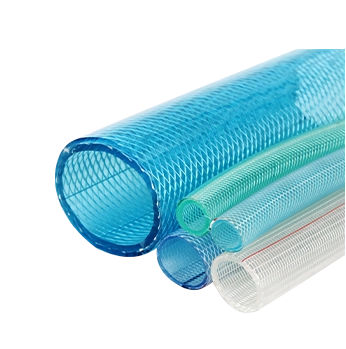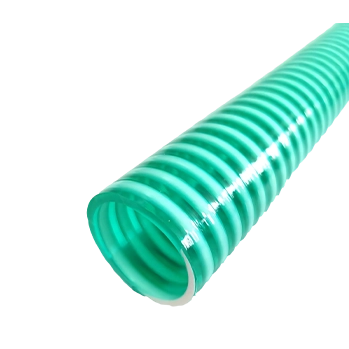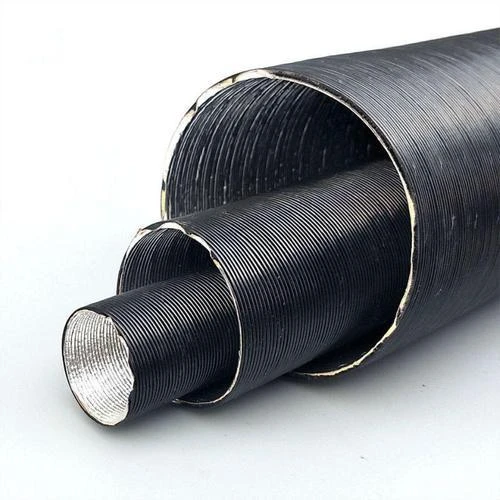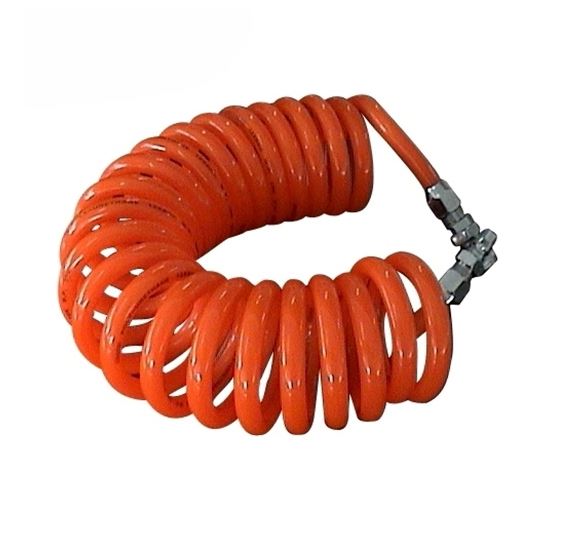Durable PVC Fiber Reinforced Hose - High Pressure & Flexible
Industry Trends and Market Dynamics for Reinforced Hoses
The global market for industrial hoses, particularly those featuring reinforcement like pvc fiber reinforced hose, is experiencing robust growth. Driven by expanding industrial infrastructure, increasing demand for durable and lightweight fluid transfer solutions, and stringent regulatory requirements for safety and environmental protection, manufacturers are continually innovating.
A key trend is the shift towards composite materials that offer enhanced performance characteristics such as higher pressure resistance, better flexibility, and improved chemical compatibility, often at a reduced weight compared to traditional rubber or metallic hoses. The emphasis on sustainability also favors PVC-based solutions due to their recyclability and often lower carbon footprint in manufacturing compared to some alternatives. Market analysis indicates a Compound Annual Growth Rate (CAGR) of approximately 4-6% for the industrial hose market, with reinforced PVC hoses being a significant contributor, projected to reach over $10 billion by 2028 globally. This growth is particularly notable in emerging economies with rapid industrialization.
Specific demand for solutions like pvc steel wire hose and helix reinforced hoses is escalating due to their superior resistance to collapse under vacuum and their ability to handle higher working pressures, making them suitable for more demanding applications in sectors like construction and mining. The advent of advanced textile reinforcement, exemplified by hose pvc tetoron reinforced variants, further pushes the boundaries of performance, offering exceptional tensile strength and durability.
Introducing Our Flagship Product: PVC STEEL WIRE FIBER COMPOSITE HOSE
At the forefront of innovation is our PVC STEEL WIRE FIBER COMPOSITE HOSE. This product embodies the pinnacle of engineering in flexible conduit solutions, combining the best attributes of PVC with the strength of both steel wire and high-tensile fiber reinforcement. Designed for multifaceted industrial applications, it offers unparalleled durability, flexibility, and resistance to harsh operating conditions. Visit our product page for more details: https://www.kebinghose.com/pvc-steel-wire-fiber-composite-hose.html.
Technical Parameters and Specifications
Understanding the core technical parameters of a pvc fiber reinforced hose is crucial for proper application and performance. These parameters define its capabilities and limitations in various operating environments.
Common PVC Fiber Reinforced Hose Parameters
| Parameter | Typical Range/Description | Importance |
|---|---|---|
| Inner Diameter (ID) | 6mm - 150mm (1/4 inch - 6 inch) | Determines flow rate capacity. |
| Outer Diameter (OD) | Varies with ID and wall thickness | Affects fitting compatibility and installation space. |
| Working Pressure | 0.5 MPa - 2.5 MPa (75 PSI - 360 PSI) | Maximum continuous pressure the hose can safely withstand. Crucial for safety. |
| Burst Pressure | Typically 3x - 4x Working Pressure | Pressure at which the hose is expected to rupture. Safety factor. |
| Temperature Range | -5°C to +65°C (23°F to 149°F) | Operating temperature limits to maintain material integrity and flexibility. |
| Bend Radius | Varies with ID (e.g., 50mm for 25mm ID) | Minimum radius to which a hose can be bent without kinking or damage. |
| Reinforcement | High-tensile polyester fiber, steel wire helix, or composite | Provides structural integrity and pressure resistance. |
| Color & Transparency | Transparent, opaque, various colors | Aesthetic, or for flow monitoring (transparent). |
| Weight (per meter) | Varies significantly with ID and type (e.g., 0.1 kg/m - 3 kg/m) | Important for handling, installation, and shipping costs. |
PVC STEEL WIRE FIBER COMPOSITE HOSE Specific Specifications
Our PVC STEEL WIRE FIBER COMPOSITE HOSE is engineered to exceed industry standards, combining the benefits of a robust PVC body, high-tensile fiber braiding, and an integrated steel wire helix. This unique composite structure ensures exceptional performance.
| Specification | Detail for PVC STEEL WIRE FIBER COMPOSITE HOSE | Benefits |
|---|---|---|
| Material Composition | Inner/Outer Layer: Virgin PVC; Reinforcement: High-strength Polyester Fiber Braiding + Galvanized Steel Wire Helix | Superior chemical resistance, abrasion resistance, and robust structural integrity. |
| Pressure Rating | Up to 2.8 MPa (400 PSI) working pressure, 8.4 MPa (1200 PSI) burst pressure (depending on ID) | Handles extreme pressure fluctuations, ensuring safety and longevity in demanding applications. |
| Vacuum Rating | Full vacuum (up to -0.1 MPa or -29.9 inHg) | Prevents collapse under suction, crucial for vacuum conveying systems. |
| Temperature Adaptability | -10°C to +70°C (14°F to 158°F) | Maintains flexibility and performance across a wide range of temperatures. |
| Abrasion Resistance | Excellent | Withstands harsh environments and abrasive media, reducing wear and tear. |
| Kink Resistance | Superior due to composite structure | Minimizes flow interruption and extends hose lifespan. |
| Flexibility | High flexibility even at lower temperatures | Ease of installation and maneuverability in confined spaces. |
| Transparency | Crystal clear with visible wire/fiber reinforcement | Allows visual inspection of fluid flow, detecting blockages or air bubbles. |
The Art and Science of Manufacturing: PVC Fiber Reinforced Hose Production Process
The creation of a high-quality pvc fiber reinforced hose is a sophisticated process that combines material science, precision engineering, and rigorous quality control. Our manufacturing facility employs state-of-the-art machinery and adheres to strict protocols to ensure every hose meets the highest performance and durability standards. Here's a detailed breakdown of the manufacturing process:
Step 1: Raw Material Preparation & Compounding
High-grade virgin PVC resin, plasticizers, stabilizers, and other additives are meticulously weighed and mixed. This precise compounding ensures the final PVC material has the desired flexibility, UV resistance, and chemical properties. For our PVC STEEL WIRE FIBER COMPOSITE HOSE, specific compounds are prepared for the inner and outer layers to optimize their respective characteristics.
Step 2: Inner Tube Extrusion
The compounded PVC material is fed into an extruder, where it is heated and forced through a die to form the seamless inner tube (liner) of the hose. This liner is crucial as it directly contacts the fluid and must be smooth, uniform, and free of defects. Its integrity determines the hose's chemical resistance and flow efficiency. (Manufacturing Process: Extrusion)
Step 3: Fiber Reinforcement Winding/Braiding
As the inner tube emerges from the extruder, it is immediately transported to the reinforcement station. Here, high-tensile polyester fibers are precisely wound or braided around the inner tube. This fiber layer provides the primary pressure resistance for the pvc fiber reinforced hose. For our composite hose, this is the first reinforcement layer.
Step 4: Steel Wire Helix Application (for Composite/Steel Wire Hoses)
For products like our PVC STEEL WIRE FIBER COMPOSITE HOSE and other pvc steel wire hose types, a galvanized steel wire helix is precisely embedded or coiled into the hose structure. This helix provides exceptional vacuum resistance, preventing collapse under suction, and significantly enhances crush resistance and overall structural rigidity. (Manufacturing Process: Coiling/Embedding)
Step 5: Outer Layer Extrusion
After reinforcement, another layer of compounded PVC is extruded over the reinforced core. This outer jacket protects the reinforcement from abrasion, UV degradation, and environmental factors. It ensures the hose's longevity and maintains its aesthetic appeal. For some helix reinforced hoses, this step encapsulates the helix within the outer layer.
Step 6: Cooling, Sizing & Cutting
The multi-layered hose is then passed through a cooling bath to solidify the PVC and set its dimensions. Precision sizing tools ensure the outer diameter and wall thickness are consistent. Finally, the continuous hose is cut into specified lengths, ready for packaging or further processing.
Step 7: Quality Control & Testing
Each batch undergoes rigorous quality control. This includes visual inspection for defects, dimensional checks (ID, OD, wall thickness), burst pressure testing, vacuum resistance testing, flexibility tests, and often chemical resistance tests. We adhere to international standards like ISO and relevant ASTM guidelines to ensure every hose meets performance specifications.
Through this meticulous process, especially the combination of fiber and steel wire in our PVC STEEL WIRE FIBER COMPOSITE HOSE, we guarantee a product that delivers superior performance and reliability.
Material Excellence, Manufacturing Precision, and Adherence to Standards
Our commitment to excellence in every pvc fiber reinforced hose begins with the selection of premium raw materials. We utilize only virgin PVC resins for optimal clarity, flexibility, and chemical resistance. The reinforcing fibers are high-tensile strength polyester, designed to withstand significant internal pressures. For composite hoses, the steel wire is galvanized for corrosion protection and maximum structural integrity.
Manufacturing Processes & Precision
- Extrusion: Both the inner liner and outer cover are precisely extruded using advanced machinery, ensuring uniform wall thickness and a smooth interior for unrestricted flow. This is critical for maintaining the hose's specified pressure rating and preventing material buildup.
- Braiding/Spiraling: The reinforcement layers (fiber and steel wire) are applied with computer-controlled precision. For pvc fiber reinforced hose, uniform braiding is key to consistent pressure handling. For helix reinforced hoses, the pitch and tension of the helix are carefully controlled to optimize vacuum resistance and flexibility.
- Integration: The multi-layer structure is fused seamlessly, preventing delamination and ensuring a cohesive unit that performs reliably over time.
Testing and Certification Standards
Our products, including the PVC STEEL WIRE FIBER COMPOSITE HOSE, undergo rigorous testing protocols to meet and exceed international quality and safety standards. This ensures that every hose delivered is robust, reliable, and safe for its intended application.
- ISO 9001:2015 Certification: Our manufacturing processes are certified under ISO 9001:2015, guaranteeing a consistent quality management system from raw material procurement to final product delivery.
- ISO 1307: Adherence to ISO 1307 specifies tolerances on dimensions for hoses, ensuring compatibility with standard fittings and consistent product quality.
- RoHS & REACH Compliance: Our hoses are compliant with the Restriction of Hazardous Substances (RoHS) and Registration, Evaluation, Authorisation, and Restriction of Chemicals (REACH) directives, affirming our commitment to environmental responsibility and safety.
- FDA Compliance (for specific grades): Certain grades of our pvc fiber reinforced hose are manufactured with FDA-approved materials, making them suitable for food and beverage, and pharmaceutical applications.
- In-house Testing: Beyond external certifications, every batch undergoes comprehensive internal testing, including burst pressure tests, vacuum tests, tensile strength tests, and flexibility assessments.
Projected Service Life and Factors Affecting Longevity
A well-maintained pvc fiber reinforced hose can have a service life of 5 to 10 years or even longer, depending on the application and operating conditions. Key factors influencing longevity include:
- Temperature: Operating outside the recommended temperature range (e.g., above +65°C or below -5°C for standard PVC) can degrade the material over time, leading to stiffening or softening.
- Pressure: Consistently operating near or above the maximum working pressure accelerates material fatigue.
- Chemical Compatibility: Exposure to incompatible chemicals can cause the PVC to swell, harden, or crack.
- Abrasion & Kinking: External abrasion from dragging or internal abrasion from highly abrasive media, along with frequent kinking, can compromise the hose structure.
- UV Exposure: Prolonged exposure to sunlight can degrade PVC. Our hoses are often formulated with UV stabilizers to mitigate this.
- Installation & Storage: Proper installation without excessive bending and storage away from direct sunlight and extreme temperatures extend hose life.
Technical Advantages of PVC Fiber Reinforced Hose
The unique construction of pvc fiber reinforced hose offers a compelling suite of advantages that make it a preferred choice across numerous industries:
- High Pressure Resistance: The integrated fiber braiding significantly enhances the hose's ability to withstand high internal pressures, making it suitable for demanding fluid transfer applications. Our PVC STEEL WIRE FIBER COMPOSITE HOSE, with its dual reinforcement, offers even greater pressure handling capabilities.
- Excellent Flexibility: Despite its strength, pvc fiber reinforced hose remains remarkably flexible, especially compared to rigid piping or rubber hoses. This flexibility allows for easier installation in tight spaces and adaptability to dynamic environments.
- Superior Abrasion and Chemical Resistance: The robust PVC material offers inherent resistance to abrasion, oils, and a wide range of chemicals, ensuring durability even in harsh industrial settings. This property significantly extends the hose's lifespan, reducing replacement costs.
- Lightweight: Compared to rubber or metal hoses with similar pressure ratings, pvc fiber reinforced hose is considerably lighter, simplifying handling, installation, and transportation. This translates to reduced labor costs and improved operational efficiency.
- Transparency for Visual Monitoring: Many pvc fiber reinforced hose variants are transparent, allowing operators to visually monitor the flow of fluids, detect blockages, air bubbles, or material integrity issues, enhancing safety and process control.
- Cost-Effectiveness: Combining performance with a competitive price point, pvc fiber reinforced hose offers an excellent return on investment due to its long service life and minimal maintenance requirements.
- Kink and Crush Resistance: Especially with the addition of a steel wire helix in pvc steel wire hose and helix reinforced hoses, these products exhibit superior resistance to kinking and crushing, maintaining flow even under challenging conditions.
Versatile Application Scenarios and Industry Benefits
The adaptability and robust performance of pvc fiber reinforced hose make it indispensable across a multitude of industries. Its ability to handle various fluids under pressure, coupled with its durability, provides significant advantages in diverse operational settings.
Applicable Industries:
- Petrochemical Industry: Used for transferring various oils, light chemicals, and water. The anti-corrosive properties of PVC are critical here, contributing to plant safety and reducing equipment wear.
- Agriculture: Essential for irrigation systems, pesticide spraying, and water transfer due to its flexibility, lightweight nature, and resistance to environmental factors. Our hoses contribute to energy efficiency by ensuring smooth water flow without significant pressure drops.
- Construction: Employed for concrete pumping (specialized versions), water discharge, and air transfer lines. Its durability stands up to the harsh conditions of construction sites.
- Mining: Used for dewatering, slurry transfer, and ventilation. The robust construction of pvc steel wire hose makes it ideal for handling abrasive materials and resisting collapse in suction applications.
- Food & Beverage Industry: Specific FDA-compliant grades are used for transferring potable water, juices, beer, and other food products, ensuring hygiene and preventing contamination.
- Water Treatment & Municipal Services: Utilized in water supply systems, drainage, and waste treatment plants for reliable fluid conveyance.
- General Industrial & Manufacturing: Found in assembly lines, workshops for air compressors, pneumatic tools, and various fluid lines.
- Aquaculture & Fisheries: Used for water aeration and fish farming.

Image: PVC fiber reinforced hose efficiently distributing water in an agricultural setting, highlighting its flexibility and durability for outdoor use.
Advantages in Typical Application Scenarios:
- Energy Efficiency: The smooth interior surface of our PVC STEEL WIRE FIBER COMPOSITE HOSE minimizes friction loss during fluid transfer, leading to reduced energy consumption for pumps and compressors. This is a direct saving on operational costs.
- Anti-Corrosion and Chemical Resistance: In environments with corrosive fluids (e.g., certain chemicals, fertilizers, or wastewater), the PVC material provides excellent resistance, preventing degradation of the hose and safeguarding the integrity of the transported media. This is especially vital in petrochemical and chemical processing plants.
- Enhanced Safety: The transparency feature allows for immediate visual detection of blockages or inconsistencies, preventing potential system failures or hazards. The high burst pressure rating ensures safe operation even under unexpected pressure surges.
- Reduced Maintenance: Due to its robust construction and resistance to wear and tear, these hoses require less frequent replacement and maintenance, contributing to lower operational expenditures and increased uptime.
Choosing Your Supplier: Manufacturer Comparison and Selection Criteria
Selecting the right manufacturer for your pvc fiber reinforced hose needs is crucial for ensuring product quality, reliability, and long-term cost-effectiveness. Here are key criteria to consider when evaluating manufacturers:
- Expertise and Experience: Look for manufacturers with a proven track record and extensive experience in hose manufacturing. A company with over a decade of specialization in reinforced hoses often possesses deeper technical knowledge and refined production processes.
- Quality of Materials: Inquire about the source and quality of their raw materials (virgin PVC, high-tensile fibers, galvanized steel). Reputable manufacturers prioritize premium inputs for superior final product performance.
- Manufacturing Technology & Precision: Assess their production capabilities. Do they utilize advanced extrusion, braiding, and coiling machinery? Precision in manufacturing directly translates to consistent product quality, optimal pressure ratings, and longer service life.
- Quality Control & Testing: A robust quality assurance program is non-negotiable. Verify their adherence to international standards (ISO, ASTM) and their internal testing procedures (burst pressure, vacuum, flexibility).
- Customization Capabilities: Can they offer tailored solutions for specific diameters, pressure ratings, lengths, or special material compositions (e.g., food-grade, anti-static)? This flexibility is vital for unique application requirements.
- Certifications & Compliance: Ensure the manufacturer holds relevant certifications (e.g., ISO 9001, RoHS, REACH, FDA for specific applications). These certifications provide independent verification of quality and safety standards.
- Customer Support & After-Sales Service: Evaluate their responsiveness, technical support, warranty policy, and ability to provide timely delivery. A strong support system adds significant value.
- Industry Reputation & References: Check for client testimonials, case studies, and industry reputation. Partnerships with leading industrial enterprises can be an indicator of trustworthiness and reliability.

Image: State-of-the-art manufacturing line for high-quality PVC steel wire hose, emphasizing precision and efficiency.
With over 15 years of dedicated experience in the hose manufacturing industry, our company prides itself on meeting these stringent criteria. We are an ISO 9001:2015 certified manufacturer, leveraging cutting-edge technology and premium materials to produce hoses, including our flagship PVC STEEL WIRE FIBER COMPOSITE HOSE, that consistently exceed industry expectations.
Tailored Solutions: Customization for Optimal Performance
While standard pvc fiber reinforced hose products fulfill a broad range of applications, many industrial scenarios demand highly specific solutions. Customization allows for fine-tuning hose properties to perfectly match unique operational requirements, maximizing efficiency and safety.
Our expertise extends to offering comprehensive customization options for our PVC STEEL WIRE FIBER COMPOSITE HOSE and other reinforced hose products:
- Diameter and Length: Production of custom inner and outer diameters, as well as specific cut lengths, to integrate seamlessly into existing systems or unique layouts.
- Pressure Rating Adjustments: Engineering hoses with higher or lower working and burst pressures based on the fluid dynamics of your application. This might involve adjustments to fiber density or steel wire gauge.
- Temperature Range Modification: Developing PVC compounds capable of performing optimally in extreme hot or cold environments outside the standard range.
- Chemical Compatibility Enhancements: Formulating specialized PVC compounds to resist aggressive chemicals encountered in specific industrial processes, extending the hose's lifespan and preventing material degradation.
- Color and Transparency: Custom colors for brand identification or specific safety protocols. Transparent options allow for visual monitoring of fluid flow, which is crucial in many processes.
- Anti-Static Properties: Incorporating anti-static additives or conductive elements for applications where static electricity buildup is a concern (e.g., transferring flammable liquids or powders).
- Food-Grade and Medical Compliance: Manufacturing hoses with FDA-compliant materials, ensuring they are safe for contact with food, beverages, or pharmaceutical products.
- End Fitting Integration: Providing hoses with pre-installed or compatible end fittings to simplify installation and ensure a secure, leak-proof connection.
Collaborating with our technical team during the design phase ensures that your customized pvc fiber reinforced hose is not just a component, but an optimized solution delivering peak performance and reliability for your specific challenges.
Application Cases and Customer Success Stories
Our commitment to delivering high-performance pvc fiber reinforced hose solutions has resulted in numerous successful applications across various industries. These real-world scenarios demonstrate the tangible benefits of choosing our products, particularly the PVC STEEL WIRE FIBER COMPOSITE HOSE.
Case Study 1: Enhanced Efficiency in Petrochemical Fluid Transfer
Challenge: A major petrochemical plant faced frequent hose replacements due to the corrosive nature of specific chemical transfers, leading to significant downtime and maintenance costs.
Solution: We provided a customized batch of PVC STEEL WIRE FIBER COMPOSITE HOSE with enhanced chemical resistance properties and a higher burst pressure rating. The integrated steel wire helix in these pvc steel wire hose variants also provided superior crush resistance in a high-traffic environment.
Outcome: The plant reported a 40% reduction in hose-related downtime within the first year and a 30% decrease in replacement costs. The transparency of the hose also allowed for easier monitoring of fluid flow, improving process control and safety.

Image: Helix reinforced hoses showcasing their flexibility and robustness in a dynamic construction environment, facilitating efficient material transfer.
Case Study 2: Optimized Irrigation for Large-Scale Agriculture
Challenge: A large agricultural enterprise needed a lightweight, flexible, and durable hose for their extensive irrigation system that could withstand continuous outdoor exposure and varied terrain.
Solution: Our standard pvc fiber reinforced hose proved to be an ideal fit. Its UV-resistant formulation and excellent flexibility allowed for easy deployment and repositioning across vast fields.
Outcome: The farm significantly improved its irrigation efficiency. The lightweight nature of the hose reduced labor for setup and relocation by 25%, and its robust design meant minimal repairs, leading to consistent water supply and better crop yields.
Case Study 3: Reliable Waste Management in Municipal Services
Challenge: A municipal waste treatment facility required a durable and collapse-resistant hose for vacuum applications, transferring wastewater and sludge, often involving suction from deep pits.
Solution: We recommended and supplied our PVC STEEL WIRE FIBER COMPOSITE HOSE due to its strong vacuum rating and robust construction. The hose pvc tetoron reinforced layer combined with the steel helix provided unparalleled strength and prevented kinking.
Outcome: The facility experienced a significant reduction in hose-related operational interruptions. The superior vacuum performance ensured consistent and efficient sludge transfer, enhancing overall operational reliability and reducing maintenance efforts by 20% annually.
Frequently Asked Questions about PVC Fiber Reinforced Hoses
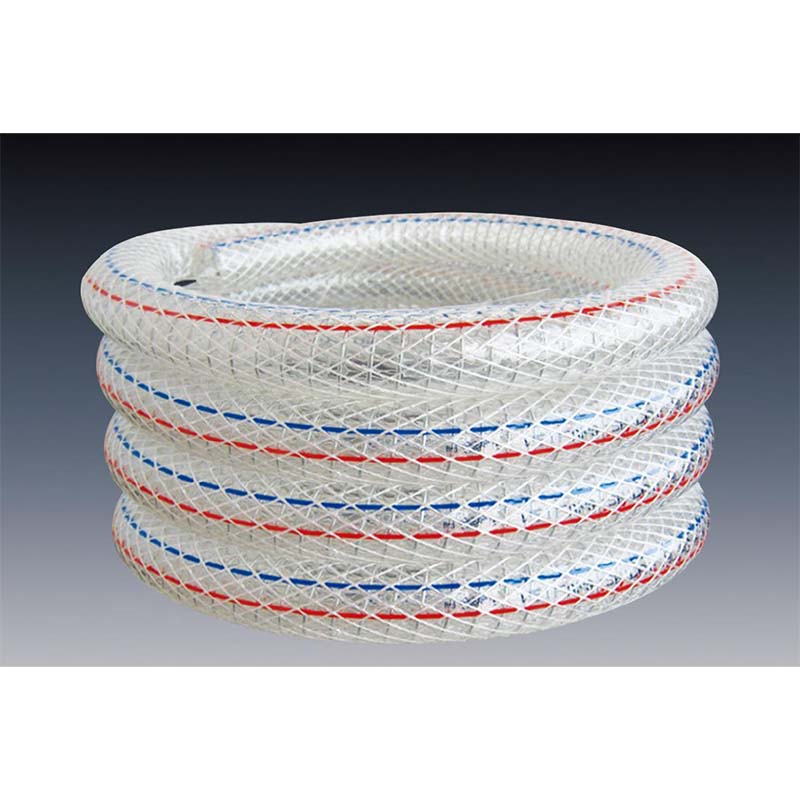
Image: Rigorous quality control checks on a hose PVC Tetoron reinforced sample, ensuring every product meets strict performance standards.
References and Further Reading
-
Industrial Hose Market Analysis: For comprehensive insights into the global industrial hose market trends and forecasts, refer to reports by leading market research firms like Grand View Research or MarketsandMarkets. While specific links are proprietary, general data trends can be found in their publicly available executive summaries.
Example Search Query: "Industrial Hose Market Size & Share Analysis" on industry statistics platforms.
-
PVC Material Science in Hoses: For in-depth technical information on PVC properties and advancements in polymer technology for hose manufacturing, academic journals such as "Journal of Applied Polymer Science" or "Polymer Engineering & Science" are valuable resources.
Example Search Query: "PVC extrusion properties polymer hoses" on Google Scholar or ScienceDirect.
-
Fluid Transfer System Best Practices: For guidelines on hose selection, installation, and maintenance in industrial fluid transfer systems, industry forums and associations like the National Association for Hose and Accessories Distribution (NAHAD) or relevant engineering societies often publish comprehensive guides and whitepapers.
Example Search Query: "NAHAD Hose Assembly Guidelines" or "Industrial fluid transfer best practices" on professional engineering forums.
-
Strong suction and flexibility: The versatile application of PVC suction hosesNewsAug.05,2025
-
Steel wire reinforcement, tough protection: The road to upgrading the strength of Wire Reinforced PVC HoseNewsAug.05,2025
-
Resilience and Flexibility Coexist: A New Industrial Perspective for Pvc Air HosesNewsAug.05,2025
-
Pulse of Efficient Transmission: The Excellent Performance and Multiple Applications of PU Pneumatic HoseNewsAug.05,2025
-
Enduring Pressure: The Industrial Mission of High Pressure Lay Flat HoseNewsAug.05,2025
-
Durable Water Conveyance: The Practical Value and Technical Charm of PVC WATER HOSESNewsAug.05,2025



